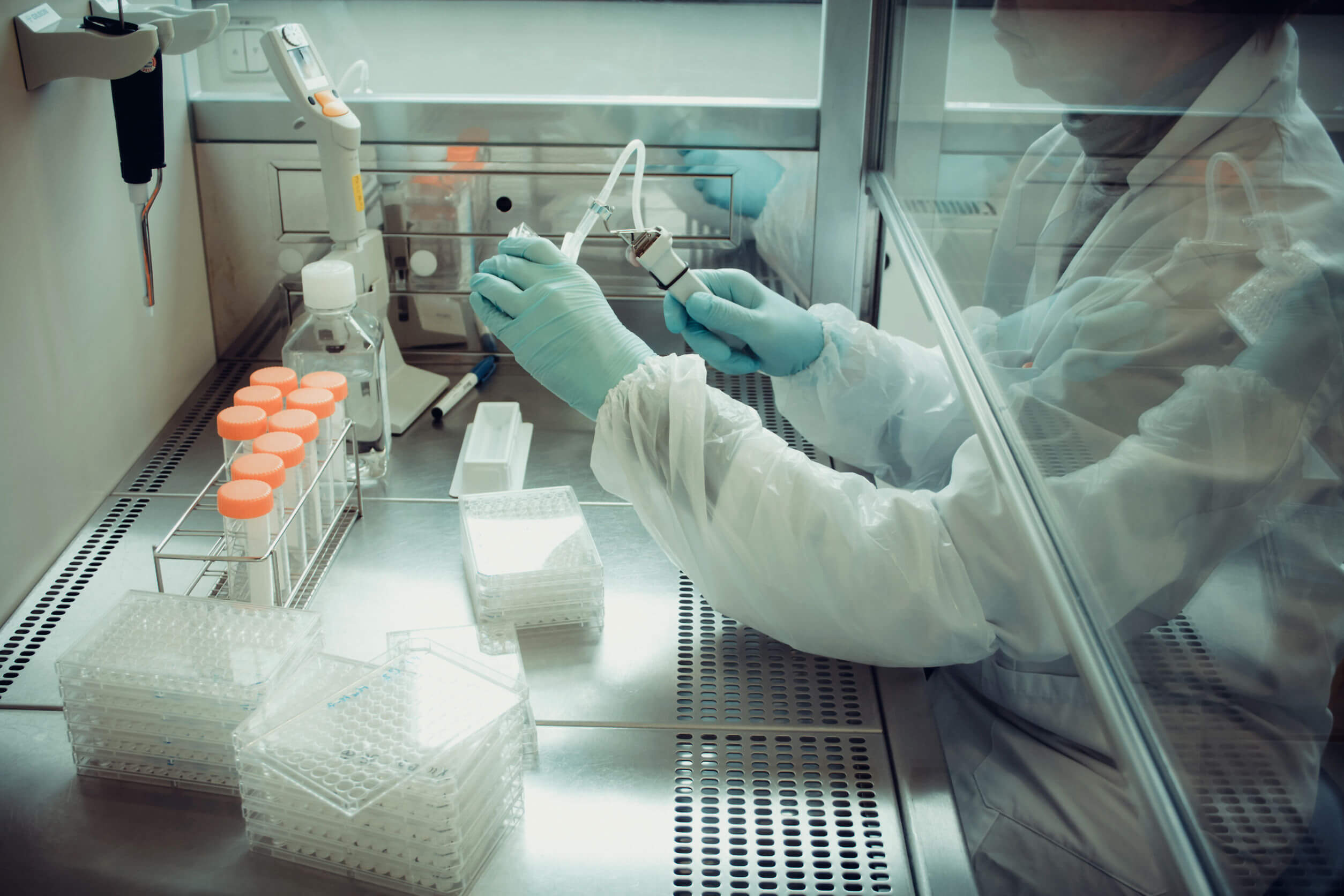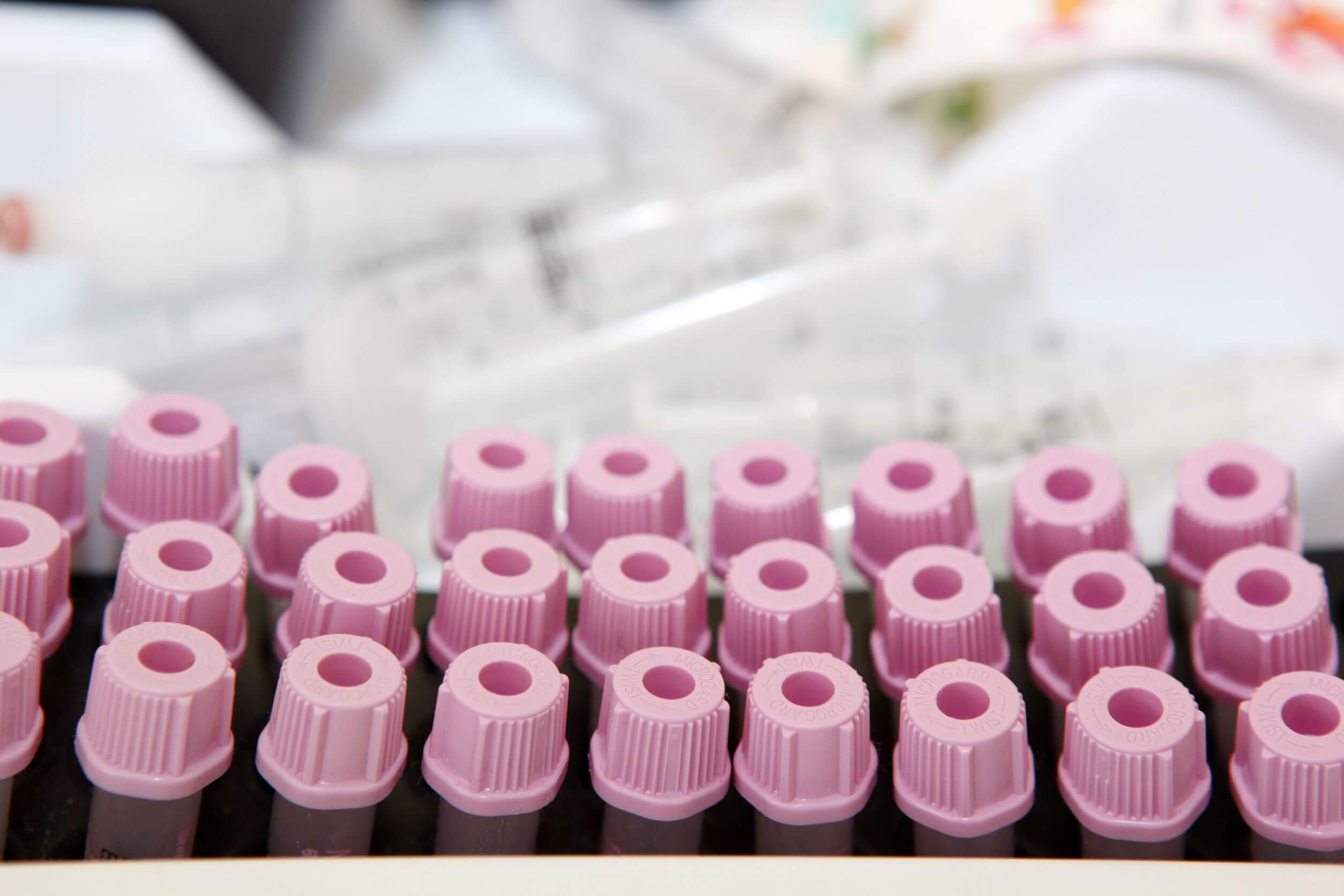How to Know if You Have Celiac Disease

Gluten-related diseases are under the microscope today. Until a few decades ago they were considered rare disorders, but today we know that they’re more common than we thought. Find out how to know if you have celiac disease.
Its symptoms manifest in many ways and you can develop several complications. Keep reading and we’ll tell you how you can know if you have celiac disease if you start to have suspicious symptoms.
Celiac disease and its challenges

Although our understanding of this autoimmune disorder has improved in recent years, we still have a lot to discover about it. Researchers point out that all the different clinical manifestations, their uneven distribution, the way in which they differ between children, men, and women, as well as asymptomatic cases, don’t allow us to fully clarify their behavior.
Today it’s believed that it affects 1% of the population, although the cases are rising every year. This is due, in part, to increased awareness of its symptoms and ways to detect it. Although this is good news, we warn you that the process can be long, full of obstacles, and many many tests.
This is all because the symptoms of celiac disease are extremely vague and can be caused by other conditions. It isn’t uncommon for a suspected patient to eventually be diagnosed with anemia, constipation, food allergies, or other autoimmune conditions such as Crohn’s disease.
However, being aware of how to know if you have celiac disease is essential in order to know what to do when certain symptoms occur. Today we’ll try to guide you in the protocol that you can follow to navigate in the sea of uncertainties that still surrounds this disorder.
How to know if you have celiac disease: steps to follow
Currently, there are serological and blood tests and biopsies that allow doctors to detect celiac disease with more than 90% certainty. However, and for different reasons, many people don’t know how to start the process. This can be due to ignorance, prejudices, a lack of time, and even wrong beliefs about the disease.
To avoid falling into any or all of the above, we’re going to show you some guidelines that you can follow to find out if you have celiac disease. To do so, we’ve used the recommendations of Celiac UK. The stages to diagnose the disease are as follows:
1. Understand the symptoms and how they manifest
Yes, the first step to knowing if you have celiac disease is to understand its clinical manifestations. Although many associate the disease with gastrointestinal symptoms, its symptoms can actually be seen in many other parts of the body.
The classic signs are diarrhea, constipation, flatulence, abdominal pain, bloating, nausea, and vomiting. These can be accompanied by headache, fatigue, weight loss, depression, bone or joint pain, irritability, anemia, and short stature, as the Celiac Disease Foundation reminds us.
These can manifest after eating foods with gluten. Bread, pizza, pasta, cookies, cupcakes, and more can trigger all of the above. In general, the symptoms appear a couple of hours after ingestion.
2. Review your habits and contextualize risk factors
You have already discovered the symptoms that characterize the disease. The second step to finding out if you have celiac disease is to review your eating habits and determine the number of symptoms you experience after eating gluten. Put on the boots of a detective and, day by day, assess how your body reacts in contact with the protein.
If you have any doubts, here we explain what exactly gluten is and some products that usually contain it. Try to alternate weeks where you completely avoid this ingredient, thus verifying the persistence of the symptoms. If you can, keep a record of what you eat and what complications it triggers.
In turn, find out if you’re part of the risk groups. If you already have an autoimmune disorder – psoriasis, diabetes, rheumatoid arthritis, lupus, and so on – then you’re more likely to develop the condition.
Women, people with Down syndrome, Europeans, and those who have a family history of the disease or other gastrointestinal disorders are also more prone to getting it.
3. Get a blood test

If you have passed the previous step, then the next thing will be to do a blood test. You can choose to do it directly in the laboratory of a health center, but if you don’t have time you can also opt for a home test. In fact, some research suggests that this is a safe, practical, and rapid method of detecting the disease.
You can buy these kits at a pharmacy for a reasonable price and they exceed 90% detection rates. When you take it, make sure that you haven’t removed gluten from your diet. Also, remember that it’s the first step in the diagnosis. Like any homemade test, it’s subject to false negatives or positives.
4. Visit a specialist
Finally, you may need to see a specialist. Their analysis is very important, both to interpret all the previous steps and to rule out other related conditions. In short, the specialist will perform standard tests in a controlled environment to determine whether or not you’re celiac.
Although the standard procedure is to do a biopsy of the small intestine, as studies show, current evidence suggests that this can be replaced by a serological examination.
By identifying the genes responsible for the disease (present in more than 95% of celiacs), associating the symptoms, and considering the home test and the patient’s experience, the specialist can give a reliable diagnosis.
However, if doubts persist, they’ll clear them up with the help of an endoscopy and a biopsy. The fact of the matter is that the specialist has the final word, although the initial steps are also of great help in order to know if you have celiac disease. Again, we remind you that you shouldn’t eliminate the consumption of gluten as this will affect the results.
Of course, the above is subject to various nuances. Unfortunately, the disease sometimes doesn’t cause symptoms, which will prevent you from moving beyond the first step. Risk factors, likewise, are not met in some patients, so the process to detect them is more complicated.
Despite this, professional laboratory tests can detect the disorder just as effectively. We encourage you to turn to a specialist to rule out or diagnose the disease with 100% efficiency.
Gluten-related diseases are under the microscope today. Until a few decades ago they were considered rare disorders, but today we know that they’re more common than we thought. Find out how to know if you have celiac disease.
Its symptoms manifest in many ways and you can develop several complications. Keep reading and we’ll tell you how you can know if you have celiac disease if you start to have suspicious symptoms.
Celiac disease and its challenges

Although our understanding of this autoimmune disorder has improved in recent years, we still have a lot to discover about it. Researchers point out that all the different clinical manifestations, their uneven distribution, the way in which they differ between children, men, and women, as well as asymptomatic cases, don’t allow us to fully clarify their behavior.
Today it’s believed that it affects 1% of the population, although the cases are rising every year. This is due, in part, to increased awareness of its symptoms and ways to detect it. Although this is good news, we warn you that the process can be long, full of obstacles, and many many tests.
This is all because the symptoms of celiac disease are extremely vague and can be caused by other conditions. It isn’t uncommon for a suspected patient to eventually be diagnosed with anemia, constipation, food allergies, or other autoimmune conditions such as Crohn’s disease.
However, being aware of how to know if you have celiac disease is essential in order to know what to do when certain symptoms occur. Today we’ll try to guide you in the protocol that you can follow to navigate in the sea of uncertainties that still surrounds this disorder.
How to know if you have celiac disease: steps to follow
Currently, there are serological and blood tests and biopsies that allow doctors to detect celiac disease with more than 90% certainty. However, and for different reasons, many people don’t know how to start the process. This can be due to ignorance, prejudices, a lack of time, and even wrong beliefs about the disease.
To avoid falling into any or all of the above, we’re going to show you some guidelines that you can follow to find out if you have celiac disease. To do so, we’ve used the recommendations of Celiac UK. The stages to diagnose the disease are as follows:
1. Understand the symptoms and how they manifest
Yes, the first step to knowing if you have celiac disease is to understand its clinical manifestations. Although many associate the disease with gastrointestinal symptoms, its symptoms can actually be seen in many other parts of the body.
The classic signs are diarrhea, constipation, flatulence, abdominal pain, bloating, nausea, and vomiting. These can be accompanied by headache, fatigue, weight loss, depression, bone or joint pain, irritability, anemia, and short stature, as the Celiac Disease Foundation reminds us.
These can manifest after eating foods with gluten. Bread, pizza, pasta, cookies, cupcakes, and more can trigger all of the above. In general, the symptoms appear a couple of hours after ingestion.
2. Review your habits and contextualize risk factors
You have already discovered the symptoms that characterize the disease. The second step to finding out if you have celiac disease is to review your eating habits and determine the number of symptoms you experience after eating gluten. Put on the boots of a detective and, day by day, assess how your body reacts in contact with the protein.
If you have any doubts, here we explain what exactly gluten is and some products that usually contain it. Try to alternate weeks where you completely avoid this ingredient, thus verifying the persistence of the symptoms. If you can, keep a record of what you eat and what complications it triggers.
In turn, find out if you’re part of the risk groups. If you already have an autoimmune disorder – psoriasis, diabetes, rheumatoid arthritis, lupus, and so on – then you’re more likely to develop the condition.
Women, people with Down syndrome, Europeans, and those who have a family history of the disease or other gastrointestinal disorders are also more prone to getting it.
3. Get a blood test

If you have passed the previous step, then the next thing will be to do a blood test. You can choose to do it directly in the laboratory of a health center, but if you don’t have time you can also opt for a home test. In fact, some research suggests that this is a safe, practical, and rapid method of detecting the disease.
You can buy these kits at a pharmacy for a reasonable price and they exceed 90% detection rates. When you take it, make sure that you haven’t removed gluten from your diet. Also, remember that it’s the first step in the diagnosis. Like any homemade test, it’s subject to false negatives or positives.
4. Visit a specialist
Finally, you may need to see a specialist. Their analysis is very important, both to interpret all the previous steps and to rule out other related conditions. In short, the specialist will perform standard tests in a controlled environment to determine whether or not you’re celiac.
Although the standard procedure is to do a biopsy of the small intestine, as studies show, current evidence suggests that this can be replaced by a serological examination.
By identifying the genes responsible for the disease (present in more than 95% of celiacs), associating the symptoms, and considering the home test and the patient’s experience, the specialist can give a reliable diagnosis.
However, if doubts persist, they’ll clear them up with the help of an endoscopy and a biopsy. The fact of the matter is that the specialist has the final word, although the initial steps are also of great help in order to know if you have celiac disease. Again, we remind you that you shouldn’t eliminate the consumption of gluten as this will affect the results.
Of course, the above is subject to various nuances. Unfortunately, the disease sometimes doesn’t cause symptoms, which will prevent you from moving beyond the first step. Risk factors, likewise, are not met in some patients, so the process to detect them is more complicated.
Despite this, professional laboratory tests can detect the disorder just as effectively. We encourage you to turn to a specialist to rule out or diagnose the disease with 100% efficiency.
- Alkalay MJ. Update on celiac disease. Curr Opin Pediatr. 2020 Oct;32(5):654-660.
- Cichewicz AB, Mearns ES, Taylor A, Boulanger T, Gerber M, Leffler DA, Drahos J, Sanders DS, Thomas Craig KJ, Lebwohl B. Diagnosis and Treatment Patterns in Celiac Disease. Dig Dis Sci. 2019 Aug;64(8):2095-2106.
- Kowalski K, Mulak A, Jasińska M, Paradowski L. Diagnostic challenges in celiac disease. Adv Clin Exp Med. 2017 Jul;26(4):729-737.
- Rashid M, Butzner JD, Warren R, Molloy M, Case S, Zarkadas M, Burrows V, Switzer C. Home blood testing for celiac disease: recommendations for management. Can Fam Physician. 2009 Feb;55(2):151-3. Erratum in: Can Fam Physician. 2009 Apr;55(4):352.
Este texto se ofrece únicamente con propósitos informativos y no reemplaza la consulta con un profesional. Ante dudas, consulta a tu especialista.







